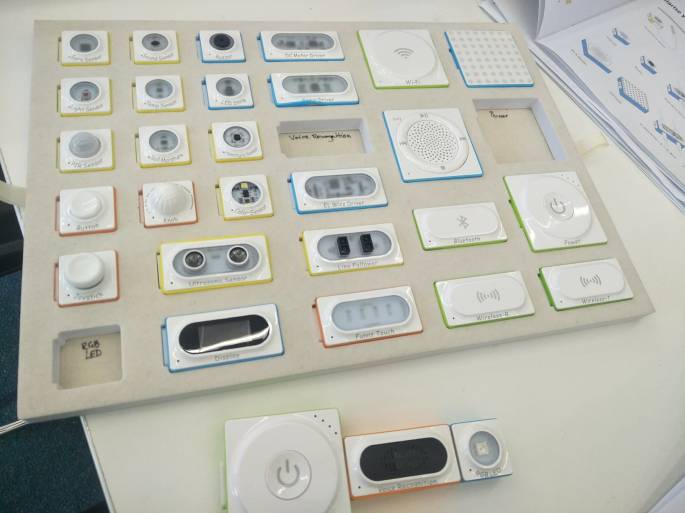The ‘maker movement’ has been made possible because of the vast growth, portability and availability of digital technologies and the easy sharing and learning of ideas through the Internet (Martinez & Stager, 2014, p.13). The movement is a conception of constructionist principles that assert that learning becomes more concrete and purposeful as we make and share products that stem from creative experiences. With formal education in mind, the subject areas of digital technologies, science and mathematics are particularly benefited from constructionist learning, by giving students the opportunity to dive deeper and put their learning to practical use. Whilst the maker movement is generally observed and enjoyed in makerspaces, there are many potential resources that can be used within a confined classroom setting, meaning that the classroom itself can become a ‘mini makerspace’.
Such an environment can be provided to even very young students, for example through using a resource such as Makeblock Neuron. Neuron is a set of programmable electronic building blocks from which students can create working gadgets with sets ranging in size from few and basic to multiple and complex components. With the makerspace context in mind, students can use it to combine electronic inputs, outputs and power and communication sources with non-digital parts like Lego pieces, cardboard or wooden cutouts to make devices for an array of practical uses. The Makeblock company itself provides set templates of ‘projects’ that can be completed from following set instructions, or the user may simply choose to exert greater creativity in constructing products of their own design.


Project-based learning like this has proven to be of great use in fostering students’ creativity by providing them with authentic experiences and the freedom to make choices about where their learning will take them (Cress & Holm, 2015). For example, other than the obvious benefits of developing computational skills such as coding, teachers may encourage their students to use Neuron to learn about historical communication and Morse code by making a telegraph, or to learn about plant growth by making an automatic plant waterer based on soil humidity and temperature sensory information.
References
Cress, S., & Holm, D. (2015). Creative Endeavors: Inspiring Creativity in a First Grade Classroom. Early Childhood Education Journal, 44(3), 235-243. doi: 10.1007/s10643-015-0704-7
Martinez, S., & Stager, G. (2014). The maker movement: a learning revolution. Learning & Leading With Technology, 41(7), 12-17.
